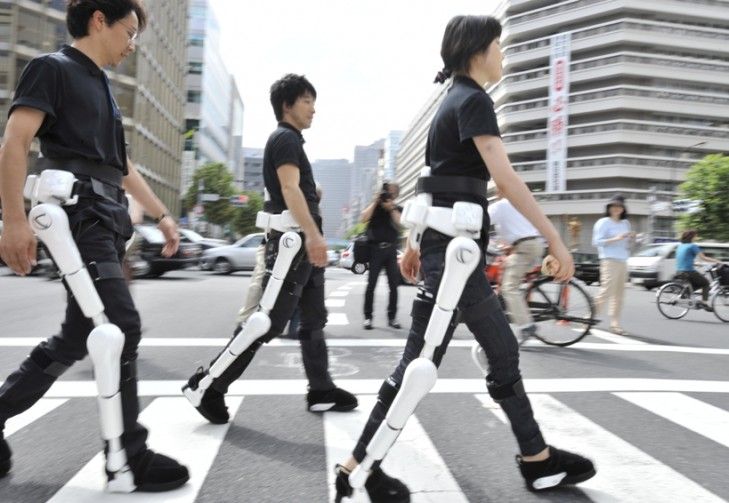New development of Russian scientists will change the lives of disabled and elderly people
Last reviewed: 16.10.2021

All iLive content is medically reviewed or fact checked to ensure as much factual accuracy as possible.
We have strict sourcing guidelines and only link to reputable media sites, academic research institutions and, whenever possible, medically peer reviewed studies. Note that the numbers in parentheses ([1], [2], etc.) are clickable links to these studies.
If you feel that any of our content is inaccurate, out-of-date, or otherwise questionable, please select it and press Ctrl + Enter.
Around the world the theme of exoskeletons has been developing for a long time.
In essence, the exoskeleton is a special suit with control, which is worn on a person and increases his physical strength and endurance.

Russian scientists also do not stand still, but make a feasible contribution to the development of new technologies.
Scientists, workers of the Saratov Technical University Alexander Bolshakov, Boris Kuzmichenko, Victor Glazkov, and graduate student Alexei Kulikov have patented a new invention - an orthopedic foot prosthesis with an integrated electric motor, and also equipped with a special saddle. With this prosthesis, the load becomes much less when walking, and the walking process itself becomes easier.
As one of the authors of the invention, Victor Glazkov (head of the Department of the "Artificial Intelligence System" of the Saratov Technical University), the invention really helps people with disabilities, the elderly. Also, the prosthesis improves the treatment, for example, with complex fractures, the prosthesis promotes a speedy recovery. But the prosthesis is quite suitable for people who, due to circumstances (car accidents, accidents at work, etc.) have lost a leg.
Currently, a similar prosthesis is produced by Honda Motor Corporation. The invention of Russians is patented as "Semiautomatic Prosthetic System". Now there is only a prototype that has expressed a desire to test various centers for the rehabilitation of disabled people.
Mobility, which will help provide new technology, is the largest and most welcome gift for people with disabilities.
Exoskeletons began to be developed by Japanese scientists in about 2005, in 2007 full-fledged finished suits appeared and the first 20 pieces were produced, and in a year more than 500 models appeared. In some countries, such suits are already available on the market, although they cost about 50 thousand dollars. The amount is not small, so in some countries exoskeletons are leased (the average price is about $ 600 per month). The biomechanical mechanism, which is implemented in a suit, helps a person to move, Seiji Weedt, who has been chained to a wheelchair since 2006, with help of one of the first exoskeleton developments, half conquered Breitgorn mountain (height 4500m), clearly showed this. It was this result of a person with disabilities that launched the process of accelerated mass production.
Exoskeletons were originally conceived in order to increase the strength and endurance of man. The first development of the exoskeleton allowed a person to lift a cargo weighing 100 kg. However, now there is a mass of load-lifting techniques, so the invention proved to be economically unprofitable, but the idea of using the model as an alternative to a wheelchair was very much in demand.
The increase in strength and endurance with the help of exoskeletons interested the military, as soldiers often have to make far transitions with heavy weapons and equipment. Since the exoskeleton allows a person to be more durable and strong, lifting loads up to 100 kg with little effort, facilitates the walking process, this development is also very valuable for the military, and models have already appeared designed specifically for soldiers.
